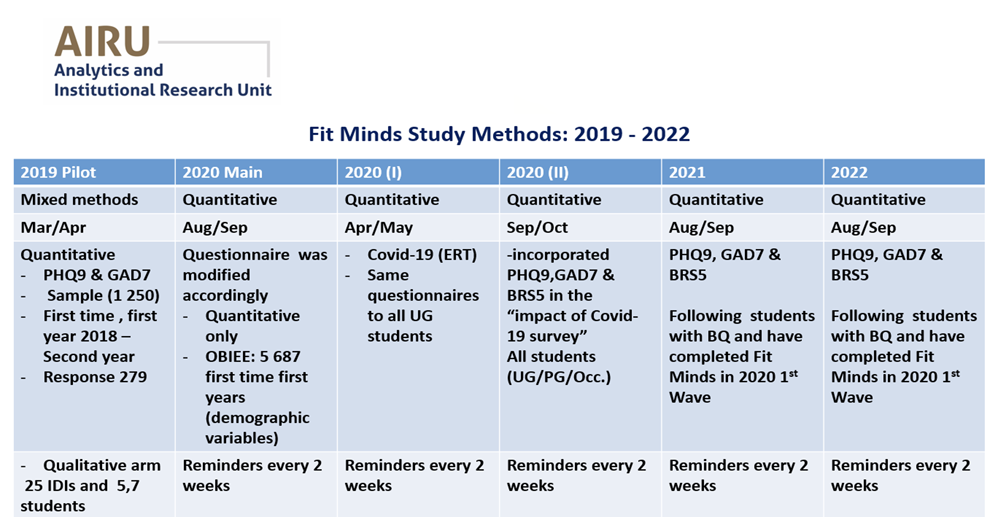Methodology
The Fit Minds mental health survey is conducted annually at the University of the Witwatersrand by the Analytics and Institutional Research Unit (AIRU). The survey is an online questionnaire comprised of validated scales used to establish the prevalence of CMDs in the student population at WITS.
A mixed methods pilot study was conducted in early 2019 targeting a random sample of 1250 first time first year students in 2018.
Data collection waves formally began in August/September 2019 and continues to take place each year. In 2019, first-time, first year students were invited to participate in a questionnaire measuring depressive and anxiety symptomology using the PHQ-9 and GAD-7 tools respectively, as well as students’ awareness of Wits mental health services. The sample was drawn from the Wits student database (OBIEE) and using unique identifiers from the student database eligible students were emailed requesting their participation in the study.
In 2020, the COVID-19 pandemic presented an urgent need to understand the mental health status of the greater student population, which sampled both undergraduate and postgraduate students. Phase 1 was conducted in March and April of 2020, during the national lockdown level 5. The same questionnaire from 2019 was targeted to all undergraduate students at Wits. Phase 2 of 2020 was completed between September and October during lockdown levels 1 and 2. All students, undergraduate and postgraduate, were invited to participate in the survey during phase 2. This phase included an additional survey tool, the Brief Resilience Scale (BRS) to measure students’ resilience.
From 2021, data were collected from students who had complete records of the Biographical Questionnaire (BQ) and had participated in the Fit Minds Study in 2020. The survey included the PHQ-9, GAD-7, BRS and awareness of mental health services at Wits. Similarly, in 2022 students who had completed the survey in 2020 and 2021 were invited to complete the same online questionnaire.
Utilizing the data collected from 2019, statistical analyses were conducted using STATA (version 14; College Station, TX, USA) to determine prevalence of depression and anxiety as well as multivariate statistics to determine associations between the key variables.



